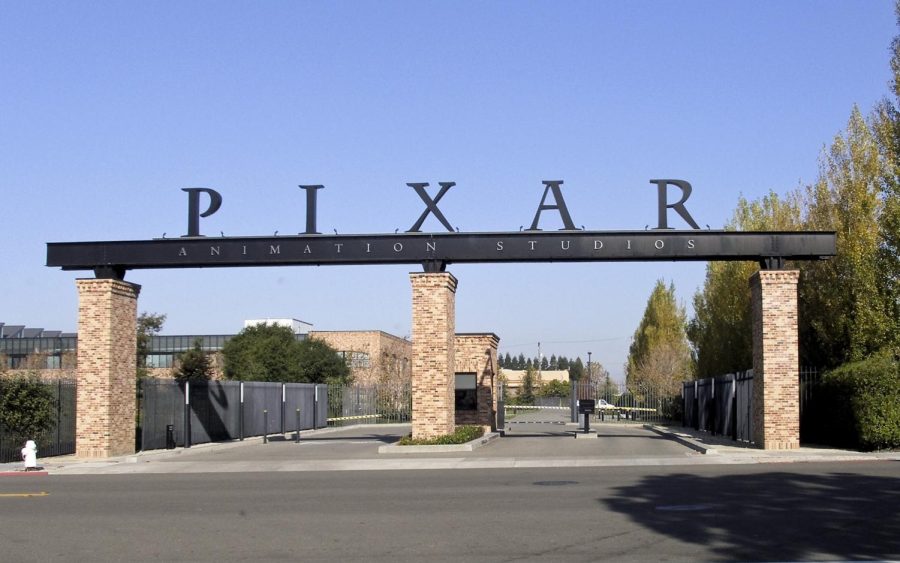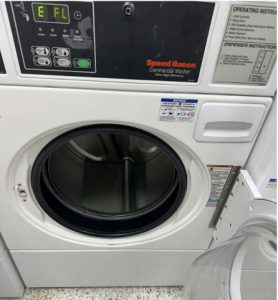Why Pixar movies make us cry
The nature of animation gives Pixar the freedom to combine imagination and reality
Oct 24, 2022
Pixar movies are notorious for making children laugh and making adults cry. The following is not an exhaustive list (though it is an effective one) of Pixar moments that have brought me and the editors at The Carroll News to tears:
Woody and Buzz flying in “Toy Story” (1995)
Jessie’s backstory in “Toy Story 2” (1999), joined by Grace and Laken
The ending of “Monsters Inc.” (2001), joined by Claire and Grace
The scene in “Finding Nemo” (2003) where Marlin cradles a lifeless Nemo and flashes back to when Nemo alone survived an attack that killed his mother and unborn siblings. Joined by Claire, Laken and TJ
The opening sequence to “Up” (2009), joined by Claire, Grace, Laken and TJ
When Woody and his friends almost die in “Toy Story 3” (2010), joined by Laken
Numerous moments in 2015 “Inside Out” (Riley crying in class, Bing Bong’s death, and the family’s collective cry as they mourn the past and miss Minnesota) Corinne, Grace and Laken.
World News Editor Patrick Kane doesn’t cry at movies and finds most Pixar movies overrated.
Each of the above scenes are notoriously tear jerking. Though the golden age of Pixar gets further from us with every passing year, Pixar movies uniquely enthrall their audiences, and I want to explore what exactly makes some of the scenes above so touching as well as suggest whether it can be done again. I’ll break it down scene by scene, finding the precise heartstring each scene so intuitively pulls.
Aside: Golden years is my own designation and spans from 2001-2009, where the following were released in order: “Monsters Inc.” (2001), ”Finding Nemo” (2003), “The Incredibles” (2004), “Cars” (2006), “Ratatouille” (2007), “Wall-E” (2008) and “Up” (2009). The collection over a nine-year span may be the most consistently impressive output of any movie studio of all time.
After a compelling competition for Andy’s attention, with special focus on the effect that competition has on Woody, the film culminates with Woody and Buzz escaping Sid’s clutch and catching up to Andy’s car as he moves from one house to another. Accompanied by stirring musical swells, this scene depicts the recognition and pursuit of a common interest between Woody and Buzz: making Andy happy. This scene illustrates cooperation with the added emotional sting that Andy remains unaware of their sentience, but the audience witnesses their sentience to its full extent.
Jessie’s backstory (Toy Story 2, 1999)
This scene captures the passing of time, forgetting, maturity and is a well-known heartbreaking moment in Pixar history. It follows Jessie as her former owner Emily outgrows her, finding Jessie under her bed only to donate her, leaving Jessie (unbeknownst to Emily) stranded and heartbroken. The scene comes at a moment in the film where Woody retains his loyalty to Andy while denying that he will ultimately outgrow him as well. What really makes this scene so brutal is not simply Jessie’s experience, but Woody’s denial that it can (and will) also happen to him. Though all we did was witness, the audience mourns the past with Jessie and feels closer to her as a result of experiencing the pain with her.
The ending to Monsters Inc. (2001)
This one’s personal. For a good portion of the movie, Boo leaves her world for the monster world, something she’ll never forget. The doors on the scare floor must be opened from the monster world; she cannot open the door to the monster world. The love she develops for Sully depends entirely upon him opening her door from his side, which ultimately happens at the end of the movie, despite Boo’s door being shredded. Sully opens the door apprehensively, where he finds Boo welcoming him, as if waiting for him. This scene shows the disparity which friendship can bridge and the lengths one will go regardless of how large the gap is. Sully learns to love Boo, and this love overrides what he was taught his entire life about the toxicity of humans. Predictably, a Randy Newman piano piece underlies the entire final scene and makes it all the more gut wrenching.
Marlin’s overprotectiveness in Finding Nemo (2003)
After an impressive display of teamwork frees Nemo, Dory and a large school of fish from a commercial fishing net, Marlin rushes to the seabed to find Nemo lifeless. Moments earlier, Marlin trusted Nemo to free the fish, and the audience witnesses the dread on his face as he begins to realize that he’d found Nemo only to lose him again. Marlin cradles Nemo and the screen flashes back to the beginning of the film, where Marlin found Nemo, the lone egg which survived an attack. The beginning of the movie triggered Marlin’s sense of overprotection, born from a sense of love and a fear of loss. That is what makes this scene so sad. Marlin is overprotective for a reason Nemo has never been able to grasp, but a reason parents can grasp fully. By the end, Nemo learns to understand Marlin’s parental desire to keep him safe while Marlin learns Nemo’s adolescent need to grow.
Opening sequence in Up (2009)
Notoriously sad, the beginning of “Up” traces the love story of Carl and Ellie, following the realization of Ellie’s infertility (or perhaps the loss of an unborn child) as well as her declining health. Carl remains faithful, retaining the boyish, wondrous love he felt for her, and viewers’ hearts break with his when Ellie ultimately passes away. Combined with one of the saddest piano pieces ever played, this scene digs right into our collective core, finding the most significant loss we’ve ever felt and making us personally sympathize with Carl. This scene mixes love, loss, growth, demise, and may well be the pinnacle of Pixar Animation Studios productions.
The two endings of Toy Story 3 (2010)
The movie almost ends with Woody and the team almost getting incinerated in a waste treatment facility. If that’s not sad enough, they all hold hands and welcome it. As Andy grows up and ignores his toys as he approaches college age, the toys experience a death of sorts, sharing the toy chest in his room. Ultimately they get rescued, but not before we shed some tears as they seem to accept the end of the journey. The journey continues however, in the hands of Bonnie. The movie’s “real” ending watches Woody and all bid farewell to Andy, and the camera pans to a cloudscape identical to the opening of the first movie. The third movie ends where the first one began, suggesting another chapter of childhood defined by a child’s love for play. It should have ended there and I therefore fully agree with World Editor Patrick Kane’s claim that Toy Story 4 should not exist.
Inside Out (2015)
Inside Out is a revival of Pixar’s golden years, following Riley’s internal life as she navigates early adolescence as well as a family move from Minnesota to California. Much of the movie is devoted to her emotions, a five-person panel responsible for her words and actions. At numerous points, these personified emotions follow Riley as she laughs, cries and, at one point, runs away from home. As Riley cries in class because she misses her old home, the audience can’t help but feel for her and respect (if not remember) the love one feels for one’s childhood home. At the end of the film, the family sits on the floor together and cries as they miss their old home. It’s the combination of adults and children crying as well as the innocence of nostalgia and reminiscence that make this scene so hard to watch yet easy to love.
Though there are plenty of Pixar scenes that I haven’t looked at more closely, I want to go forward with the foundation I’ve created thus far. What do these scenes offer? What gives them such staying power?
The key is the nature of animation. Because these characters are computer generated and not real, their vitality depends on the life which we give them. Viewers must believe in these characters and take our part in their creation before their stories can impact us. Talented animators spend years putting these characters together inside a film, but the audience ultimately connects the animation to real life. When an audience can connect to these characters, something astounding happens, and it is that intangible thing which explains why these movies can be so emotional in a way ‘traditional’ movies often cannot.
The medium of animation gives these films a lot of freedom. Finding Nemo makes up an entire underwater adventure following an overprotective father and his son; Ratatouille imagines a rat with a passion for cooking; Cars suggests how vehicles may talk and act around one another without the presence of humans. Animation can enliven unreality, and the captivity and support of audiences can establish an unmistakable middle ground somewhere in between reality and fiction.
Whether it’s the first eight minutes of Up or the last 10 minutes of Toy Story 3, these films transport the audience into that middle ground, somewhere imagined by humans but ungoverned by the laws of reality. Let the tears we shed at any of Pixar scenes and stories remind us of this middle ground animation occupies, a strange space where happiness and sadness share power, some place enough like a dream to be believed, yet enough like reality to be remembered.













